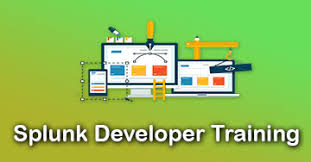
Splunk Development
Basic Concepts: Start by learning the basics of Splunk development and its architecture. SPL and Data Input: Understand how to use SPL for data analysis and configure data inputs in Splunk.
Splunk Development Course Content
Module 1: Introduction to Splunk Development
Skills: None required
Topics:
Overview of Splunk development
Splunk architecture and components
Setting up a Splunk development environment
Module 2: Splunk Search Processing Language (SPL)
Skills: Basic understanding of search queries
Topics:
Introduction to SPL
SPL syntax and commands
Using SPL for data analysis and visualization
Module 3: Splunk Data Input and Indexing
Skills: Understanding of data indexing concepts
Topics:
Configuring data inputs in Splunk
Customizing data inputs for different sources
Managing and monitoring data indexing
Module 4: Splunk Data Models and Pivots
Skills: Basic understanding of data modeling
Topics:
Introduction to Splunk data models
Creating and customizing data models
Using pivots for data analysis
Module 5: Splunk App Development
Skills: Understanding of software development concepts
Topics:
Introduction to Splunk apps
Creating and managing Splunk apps
Using the Splunk App Framework
Module 6: Splunk Dashboards and Visualizations
Skills: Basic understanding of data visualization
Topics:
Creating dashboards in Splunk
Customizing dashboard panels
Using visualizations for data analysis
Module 7: Splunk Alerts and Monitoring
Skills: Basic understanding of alerting concepts
Topics:
Setting up alerts in Splunk
Configuring alert actions
Monitoring alerts and managing alert settings
Module 8: Splunk REST API
Skills: Understanding of API concepts
Topics:
Introduction to the Splunk REST API
Using the REST API for data retrieval and manipulation
Developing custom applications with the REST API
Module 9: Splunk Enterprise Security
Skills: Understanding of security concepts
Topics:
Overview of Splunk Enterprise Security (ES)
Using ES for threat detection and response
Implementing security use cases with ES
Module 10: Splunk App Development Best Practices
Skills: Understanding of software development best practices
Topics:
Best practices for Splunk app development
Code quality and performance optimization
Testing and debugging Splunk apps
Module 11: Splunk Deployment and Administration
Skills: Basic understanding of deployment concepts
Topics:
Deploying Splunk apps to production
Managing and monitoring Splunk apps
Scaling Splunk apps for large-scale deployments
Module 12: Splunk Integration with External Systems
Skills: Understanding of integration concepts
Topics:
Integrating Splunk with external systems (e.g., databases, APIs)
Using Splunk SDKs for integration
Developing custom solutions for data ingestion and analysis
Splunk Development Learning Roadmap
Basic Concepts: Start by learning the basics of Splunk development and its architecture.
SPL and Data Input: Understand how to use SPL for data analysis and configure data inputs in Splunk.
Data Models and Pivots: Learn how to create and customize data models and use pivots for data analysis.
App Development: Explore Splunk app development and how to create and manage Splunk apps.
Dashboards and Visualizations: Learn how to create dashboards and customize visualizations in Splunk.
Alerts and Monitoring: Understand how to set up alerts and monitor them in Splunk.
REST API: Learn how to use the Splunk REST API for data retrieval and application development.
Enterprise Security: Explore Splunk Enterprise Security and how to use it for threat detection and response.
App Development Best Practices: Learn best practices for Splunk app development, including code quality and performance optimization.
Deployment and Administration: Understand how to deploy Splunk apps to production and manage them in large-scale deployments.
Integration with External Systems: Learn how to integrate Splunk with external systems and develop custom solutions for data ingestion and analysis.
This roadmap and course content will help you build a strong foundation in Splunk Development and prepare you for a career as a Splunk Developer.
Enroll For Course Now